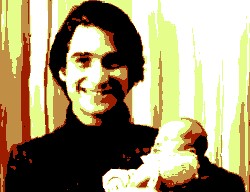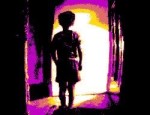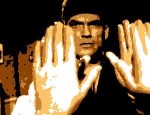Film Review

As in most of his films, Truffaut draws on his own experiences (including a failed marriage and numerous ill-fated romances) to make this a very personal and believable portrait of a marriage made in Heaven gradually transforming into a living Hell. The film's main strength lies in the way in which it manages to capture the rich colour of the life of a newly wedded couple, complete with moments of tenderness, intense happiness at the birth of a child, and, ultimately, the trauma when the relationship starts to falter. From the first scene, the film endears itself to its audience with its striking honesty, innocence and lack of pretence.
There are some moments of blindingly superb comedy, which range from the understated (such as Antoine's hopeless attempts to speak English during a job interview) to the blatantly contrived (such as the exploding bouquet which reveals Antoine's infidelity to his wife). Indeed perhaps the most striking feature of Domicile conjugal is its constant stream of comic situations and its tireless sense of fun, even whilst telling a somewhat poignant story of marital breakdown.
Truffaut's long-standing obsession with cinema is noticeable here (as in many of his films) through several references to his personal idols. The bustling courtyard in which the Doinels have their apartment bears a marked similarity to that in Jean Renoir's 1936 classic Le Crime de Monsieur Lange. There is also a brief homage to Jacques Tati, as a Monsieur Hulot look-a-like makes an unexpected appearance at a railway station. Also watch out a fleeting glimpse of Philippe Léotard in his film debut, some years before he became famous for "hard man" roles in films such as La Balance (1982).
© James Travers 2002
The above content is owned by frenchfilms.org and must not be copied.
Film Synopsis
Now 26, Antoine Doinel is happily married to Christine Darbon. The couple share a small but comfortable apartment in Paris, and while she gives violin lessons, he earns a meagre wage dyeing flowers for a florist. Antoine finally gets tired of his monotonous job and goes for an interview with an American construction company. Thanks to an administrative error, he is offered work, operating radio-controlled boats in a scale-model of a harbour. Antoine could not be happier - he has a wife, a satisfying job - and a baby, because Christine has just given birth to their first child. One day, Antoine is showing off in front of an important client when a pretty Japanese girl loses a bracelet in the model harbour. Naturally, he recovers it and the next thing he knows he is contemplating cementing his own East-West alliance. Kyoto is her name and she soon has the honour of being Antoine's first mistress. As he embarks on an idyllic love affair with this oriental beauty, Antoine acquires a taste for all things Japanese and almost forgets that he is married and has a baby son. It isn't long before Christine discovers the truth, however. Is their marriage to end so soon after it has begun...?© James Travers
The above content is owned by frenchfilms.org and must not be copied.
Similar Films
Here are some other films you may enjoy watching:- Paris When It Sizzles (1964)
- Carry on Loving (1970)
- Irma la Douce (1963)
- Le Déjeuner sur l'herbe (1959)
- Baisers volés (1968)
Other related links:
Film Credits
- Director: François Truffaut
- Script: François Truffaut (dialogue), Claude de Givray (dialogue), Bernard Revon (dialogue)
- Cinematographer: Néstor Almendros
- Music: Antoine Duhamel
- Cast: Jean-Pierre Léaud (Antoine Doinel), Claude Jade (Christine Darbon Doinel), Hiroko Berghauer (Kyoko), Barbara Laage (Monique, la secrétaire), Danièle Girard (Ginette, la serveuse), Daniel Ceccaldi (Lucien Darbon), Claire Duhamel (Madame Darbon), Daniel Boulanger (Le voisin ténor), Silvana Blasi (Silvana), Pierre Maguelon (L'ami de Césarin), Jacques Jouanneau (Césarin), Claude Véga (Le pseudo étrangleur), Jacques Rispal (Monsieur Desbois), Jacques Robiolles (Jacques), Pierre Fabre (L'employé de bureau ricaneur), Christian de Tillière (Baumel), Billy Kearns (Mr. Max), Annick Asty (La mère de Marianne), Marianne Piketti (Marianne), Guy Piérauld (Le réparateur TV)
- Country: France / Italy
- Language: French
- Support: Color
- Runtime: 100 min
- Aka: Bed and Board ; Bed & Board
The very best sci-fi movies

The very best fantasy films in French cinema

The best of Indian cinema
